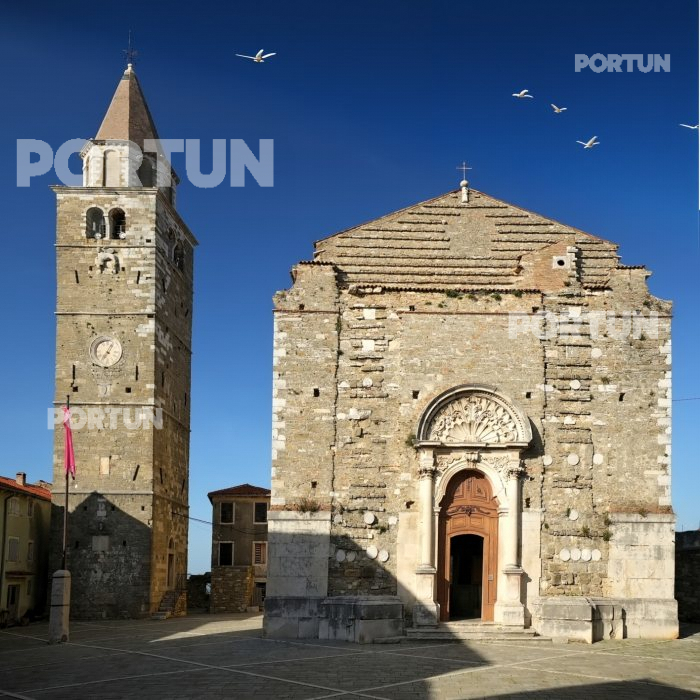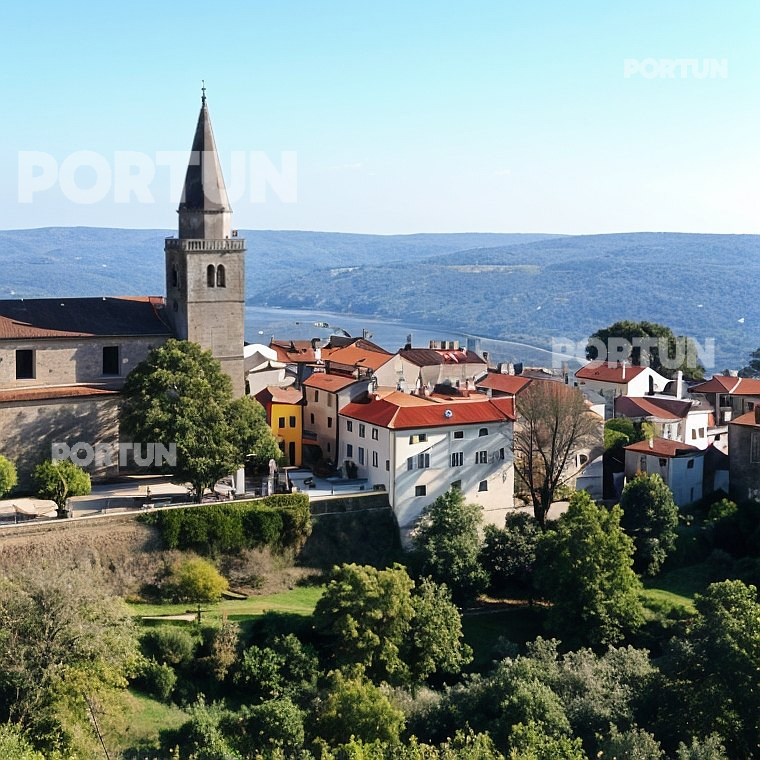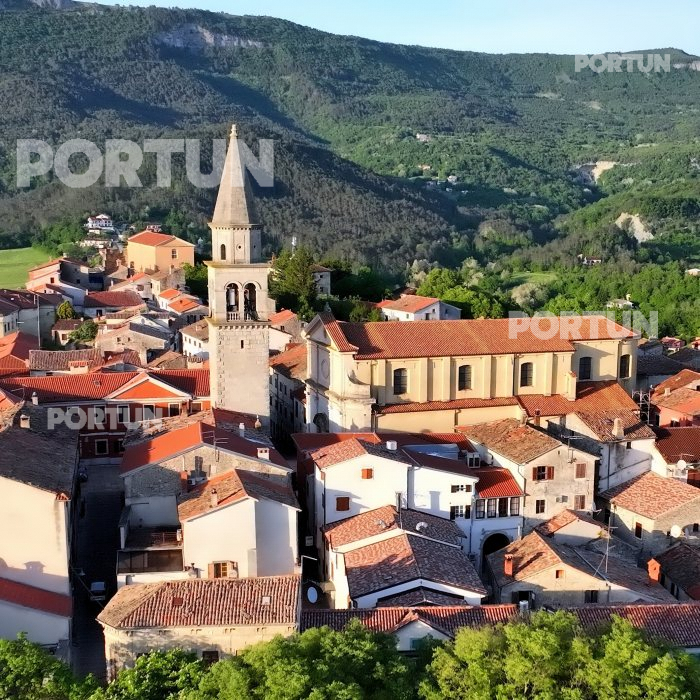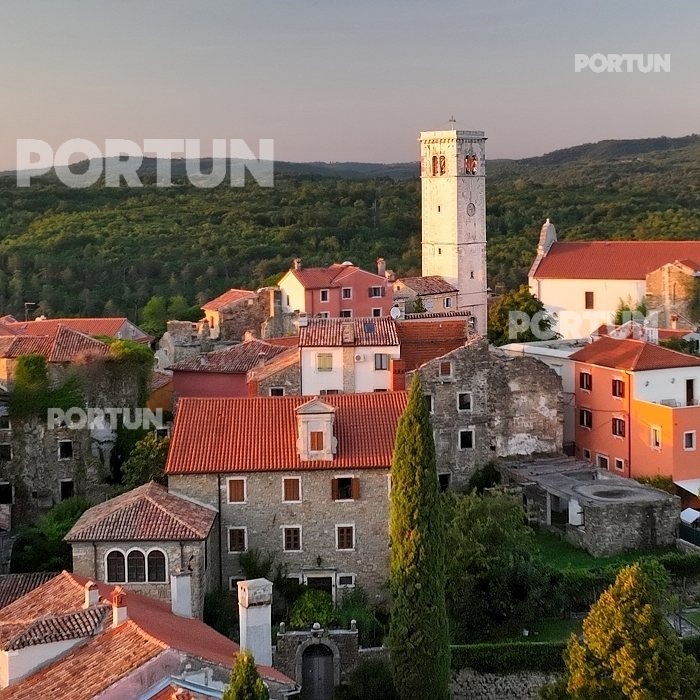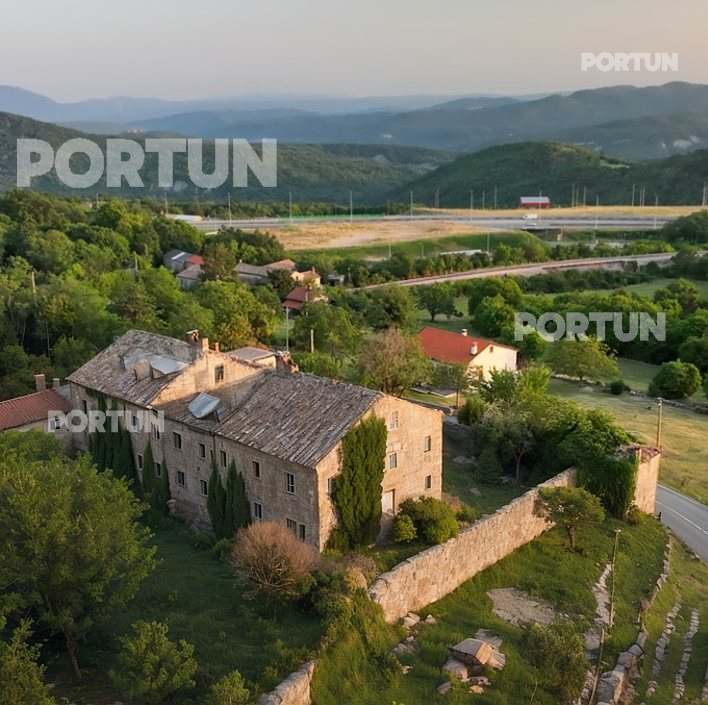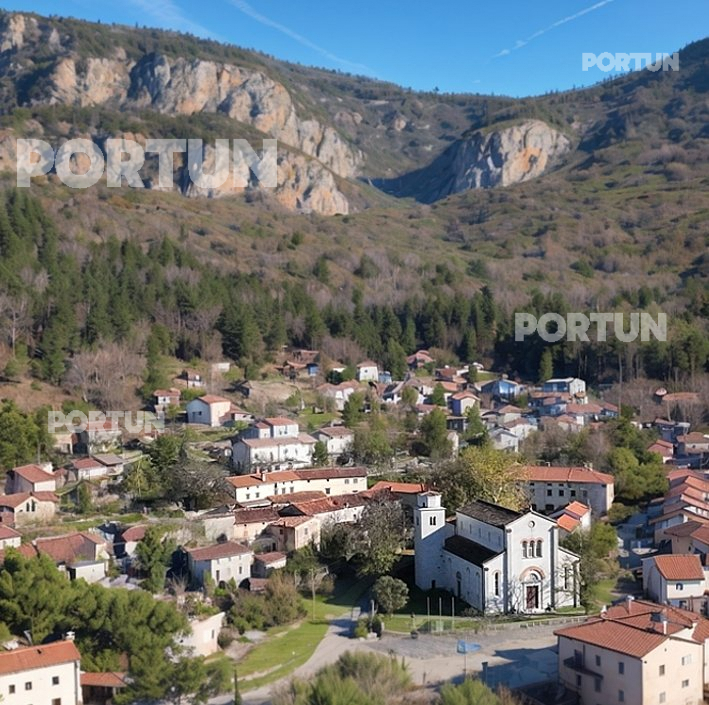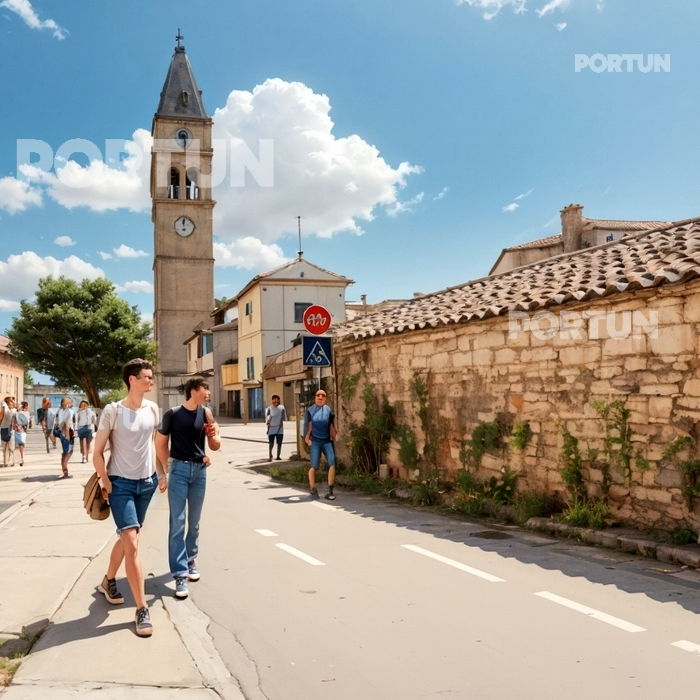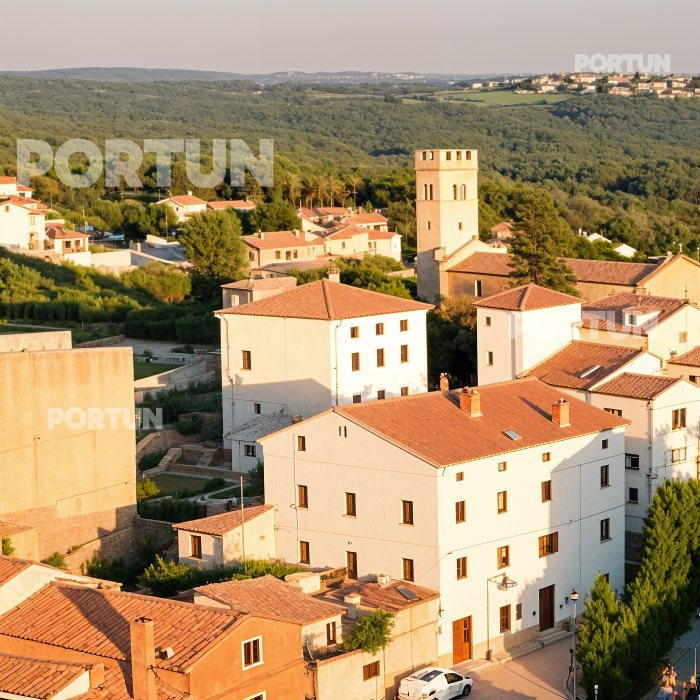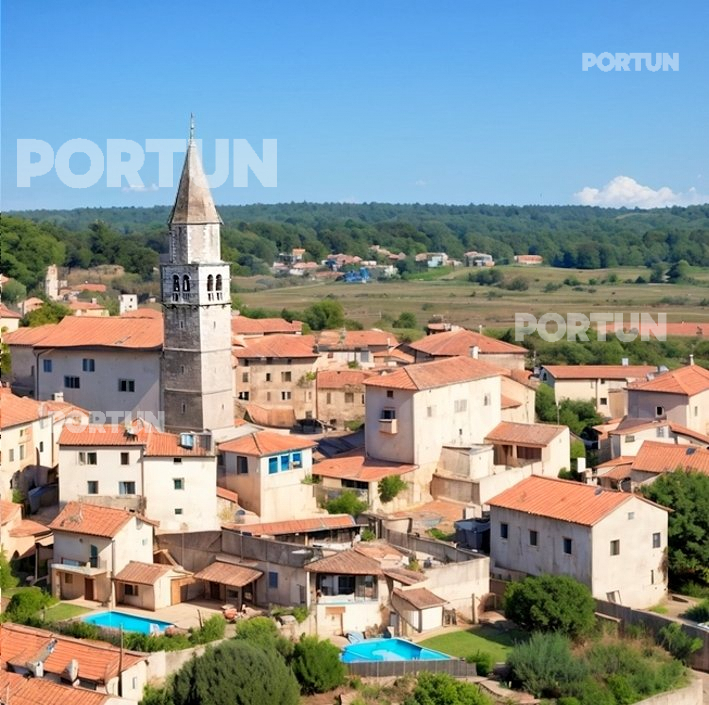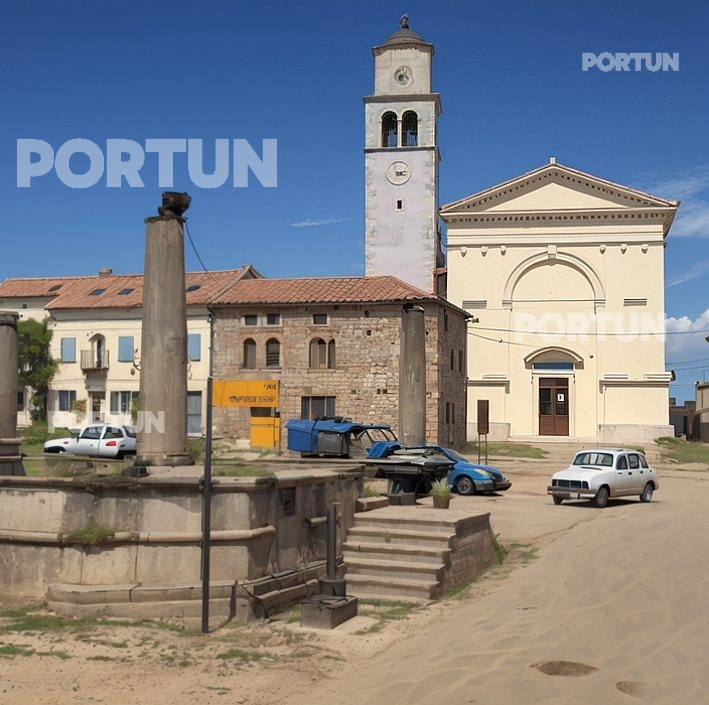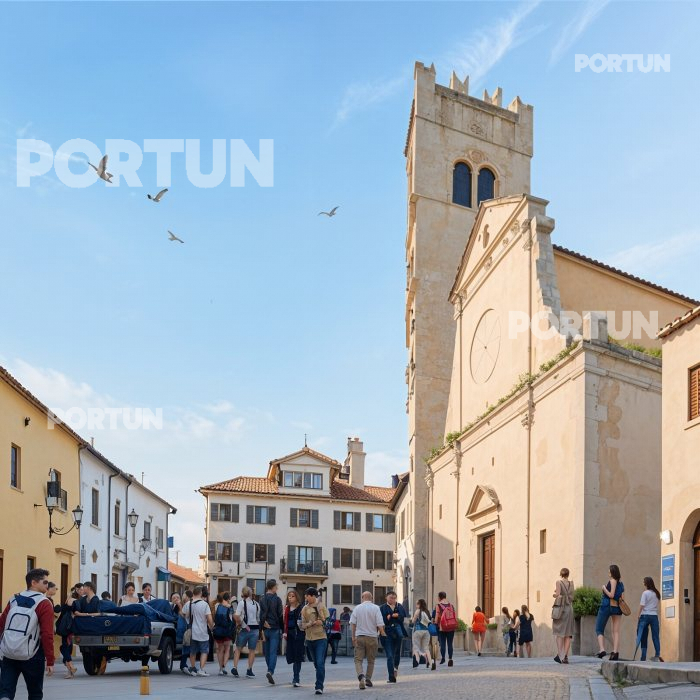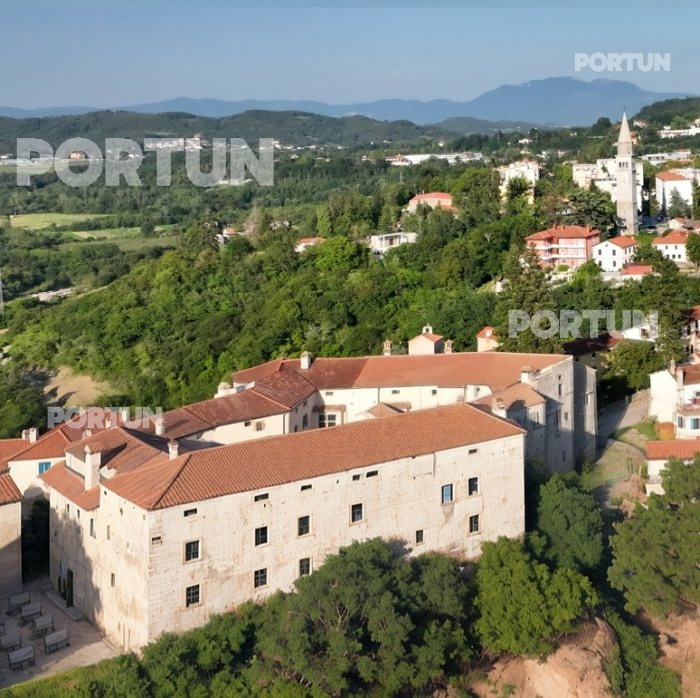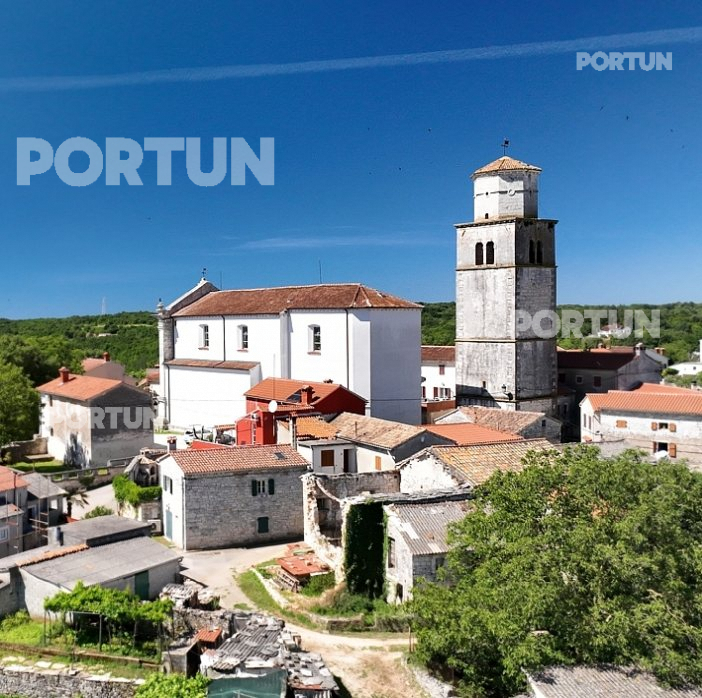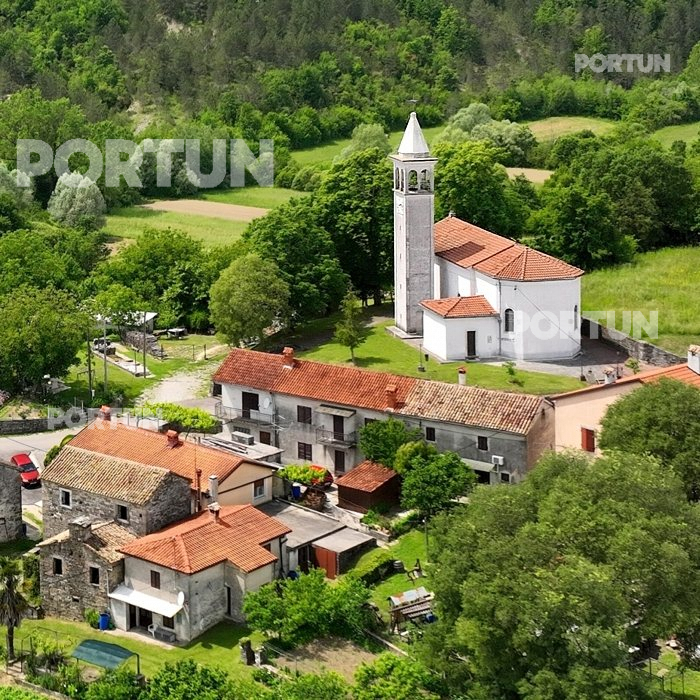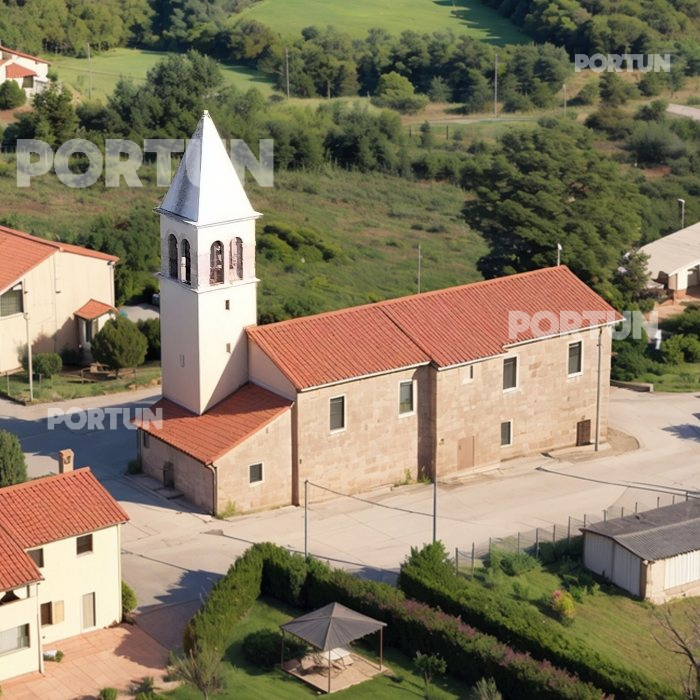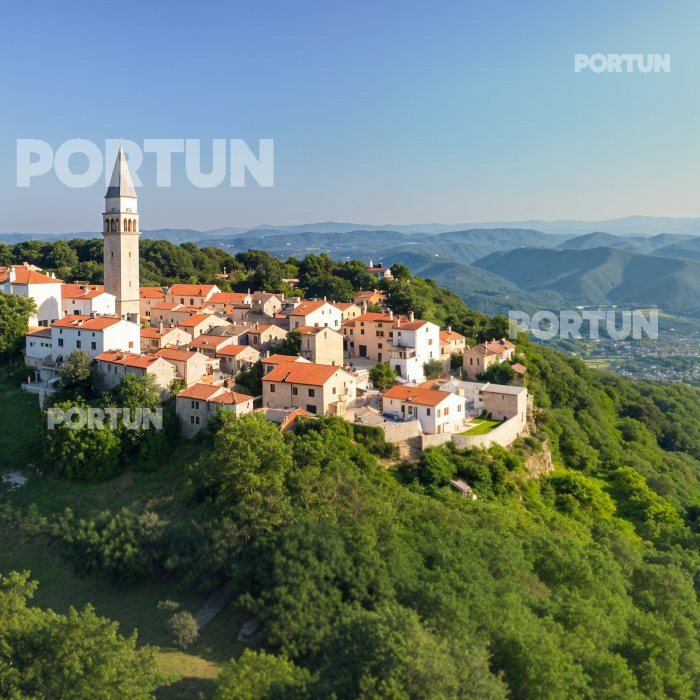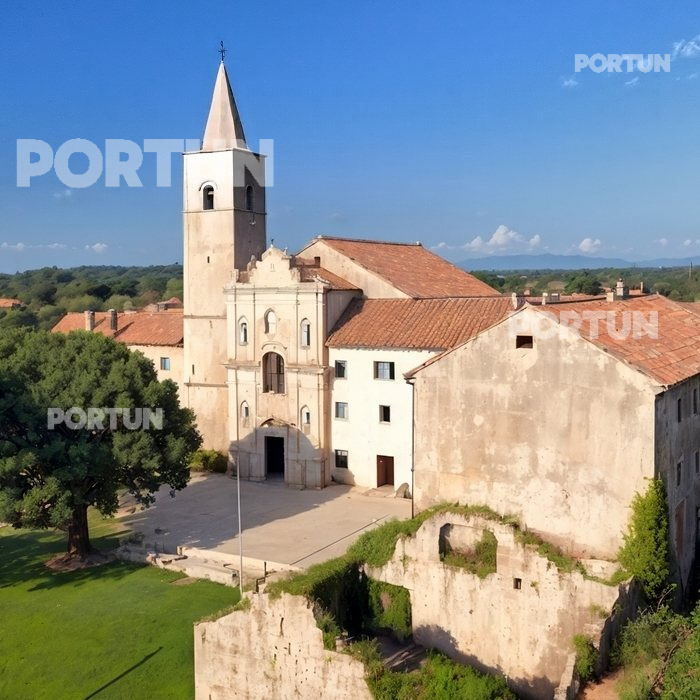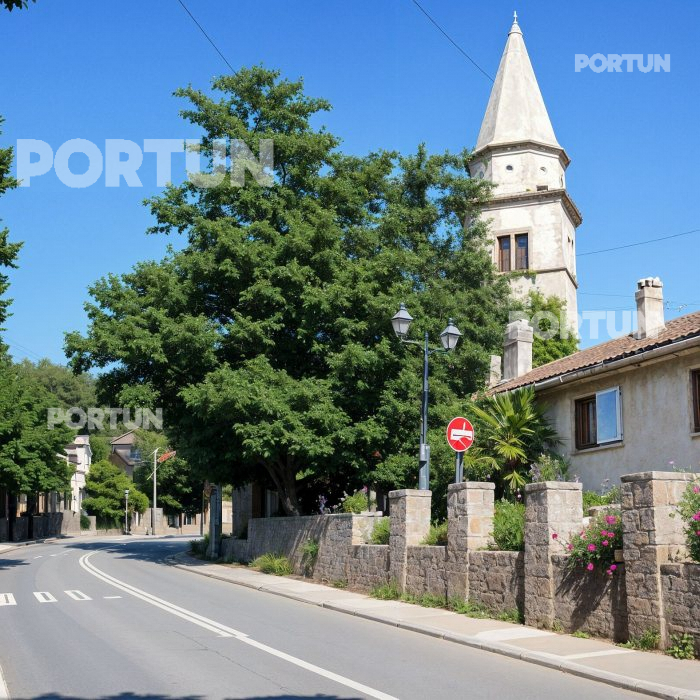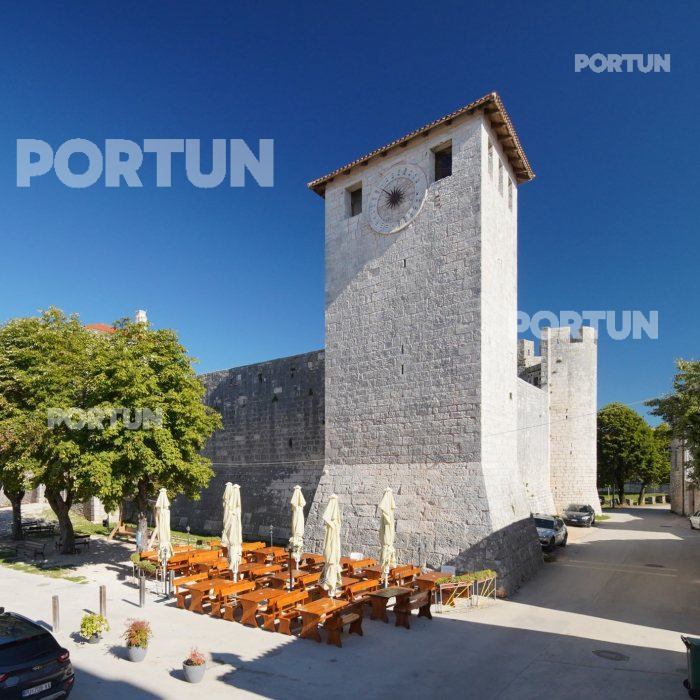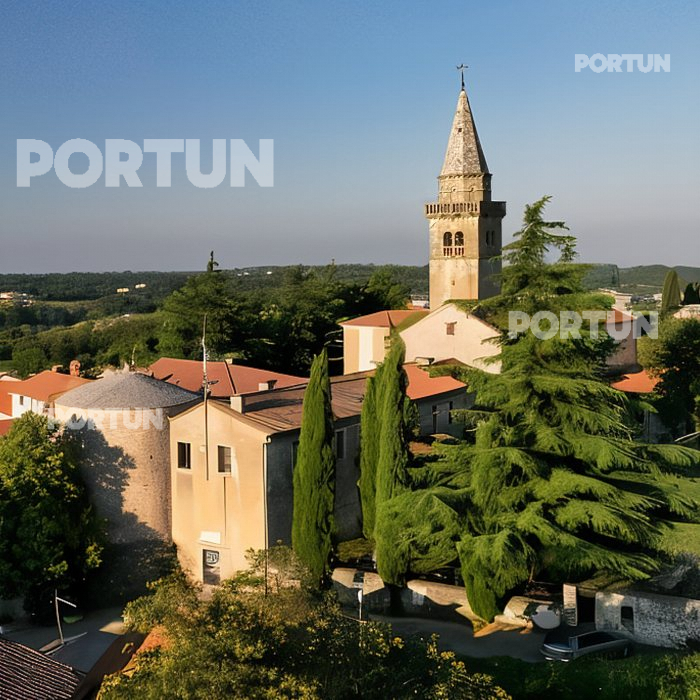Once a border town, Tinjan was known as Attinianum in Roman times. It became a town in 1578, preserving its history ever since. At the summit of the settlement stands the parish church of St. Simon and St. Jude the Apostles, built in 1773 in an early Neoclassical style with Baroque and Rococo elements inside. Previously, a church dedicated to St. Anthony the Abbot stood in the same place. The old town core has remained unchanged since the Middle Ages, with the oldest house dating back to 1442.
Today, Tinjan proudly preserves its rich history and tradition. Symbols such as stone drywalls, ponds, scythes, and rankuns, as well as the rich folklore and architectural heritage, represent the essence of this place's identity. Particularly notable is the tradition of Istrian prosciutto production, preserved in several registered prosciutto factories, leading to Tinjan being declared the Municipality of Istrian Prosciutto in 2006. Additionally, the blacksmithing craft is another important tradition of this area, with Tinjan's blacksmiths being widely renowned.
Kringa, near Tinjan, is known as the home of Europe's oldest vampire, Jure Grando. His story was recorded in the book "The Glory of the Duchy of Carniola" by Slovenian traveler Janez Vajkard Valvasor. Grando, who died in 1656, reportedly rose from his grave every night, wandered around Kringa, knocked on doors, and then visited his widow. After sixteen years of terror, the locals decided to decapitate him and bury his head. The story of Grando inspired numerous literary and cinematic works and became the basis for cultural programs in Kringa and Tinjan.
Tinjan, once fortified with walls and towers, is now a captivating place where tradition and history are proudly displayed, making it an integral part of Istrian heritage.
Real Estate Market in Tinjan – Overview of Opportunities and Investment Potential
Quality of Life in the Municipality of Tinjan
The municipality of
Tinjan, located in central Istria, offers exceptional quality of life in a peaceful, green environment. A kindergarten and primary school operate in the area, along with a general medical practice, and residents have access to essential public services and grocery stores. Cultural life is enriched by local events, most notably the
International Prosciutto Fair ISAP, which transforms Tinjan into the epicenter of Istrian gastronomy and culture each year. The local community cherishes tradition while embracing modern trends, making Tinjan an ideal place for quiet family living or occasional nature retreats.
Why Choose Tinjan for Real Estate Investment?
Tinjan is an attractive destination for buyers seeking property in inland Istria, away from tourist crowds. Its proximity to larger towns such as
Poreč and
Pazin ensures good connectivity, while the natural surroundings and lower price per square meter compared to coastal areas offer excellent investment potential. The climate is pleasant year-round, and the high level of privacy and tranquility attracts foreign buyers looking for a rural home.
The Municipality of Tinjan and Its Villages
The municipality covers an area of 52.8 km² and consists of eight villages:
Brčići, Brečevići, Jakovici, Kringa, Muntrilj, Radetići, Tinjan, and
Žužići. Each of these places has its own charm, from historical cores to untouched nature, further enriching the diversity of available real estate.
Overview of Properties in Tinjan
The offer of
real estate in Tinjan includes everything from renovated stone houses to modern villas, building plots, and agricultural land. Whether you’re looking for a family home, vacation house, or plan to launch a tourism project, Tinjan provides a wide range of options.
Houses for Sale – Tradition and Authenticity
In the area, there are numerous
houses for sale in Tinjan, ranging from restored traditional Istrian homes to modern villas with pools. These houses often feature large yards, privacy, and beautiful views of the rolling hills. Investing in a house in Tinjan is appealing both for tourism and permanent living.
Land Plots – Opportunities for Development
Tinjan is known for its many available
building plots for sale in Tinjan, making it a great opportunity for those wishing to build their dream home. Prices are competitive, and infrastructure is available in many areas. Locations combine nature, privacy, and proximity to larger cities.
Special Deals and Affordable Zones
Unlike popular coastal locations,
real estate in Tinjan offers significantly more affordable prices, with the chance to obtain larger plots and more space for the same investment. Older houses for renovation and plots with ready-made projects can often be found at very competitive rates, making this region highly attractive for long-term investment.
Nearby Areas – Additional Inspiration
If you’d like to broaden your search, consider these neighboring areas:
Kanfanar,
Sveti Lovreč,
Žminj,
Sveti Petar u Šumi,
Poreč,
Višnjan,
Pazin.





